Recently, the Indian Prime Minister virtually dedicated to the nation the Sela Tunnel project during the Viksit Bharat Viksit North East programme in Itanagar, Arunachal Pradesh.
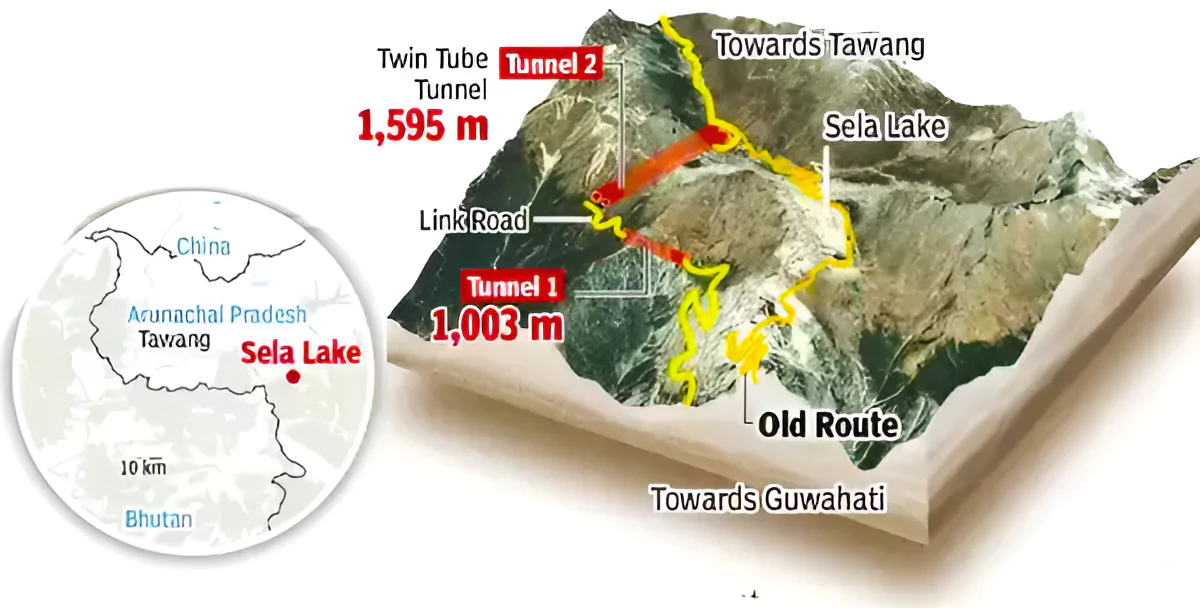
About New Austrian Tunneling Method (NATM)
About Border Roads Organisation (BRO)
|
|---|
News Source: PIB
| Must Read | |
| NCERT Notes For UPSC | UPSC Daily Current Affairs |
| UPSC Blogs | UPSC Daily Editorials |
| Daily Current Affairs Quiz | Daily Main Answer Writing |
| UPSC Mains Previous Year Papers | UPSC Test Series 2024 |
Recently researchers at Cambridge University and the California Institute of Technology made a big advance by designing a sexually reproducing fruit fly species to reproduce asexually.
Asexual Reproduction
Benefits:
|
|---|
News Source: The Hindu
| Must Read | |
| NCERT Notes For UPSC | UPSC Daily Current Affairs |
| UPSC Blogs | UPSC Daily Editorials |
| Daily Current Affairs Quiz | Daily Main Answer Writing |
| UPSC Mains Previous Year Papers | UPSC Test Series 2024 |
Ministers of Health from African countries with the highest burden of malaria recently signed the Yaounde Declaration with the objective of ending malaria deaths.
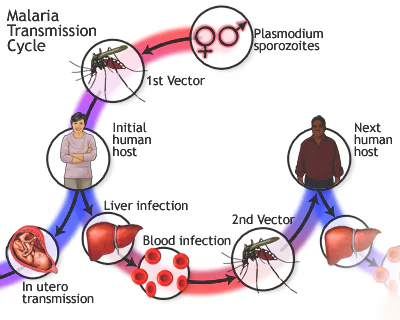
National Framework for Malaria Elimination (2016-2030)
News Source: Down to Earth
| Must Read | |
| NCERT Notes For UPSC | UPSC Daily Current Affairs |
| UPSC Blogs | UPSC Daily Editorials |
| Daily Current Affairs Quiz | Daily Main Answer Writing |
| UPSC Mains Previous Year Papers | UPSC Test Series 2024 |
Recently the Cabinet Committee on Security (CCS) has cleared a Rs 15,000 crore project to design and develop the Advanced Medium Combat Aircraft (AMCA), India’s fifth-generation multirole fighter jet.
Stealth Technology
|
|---|
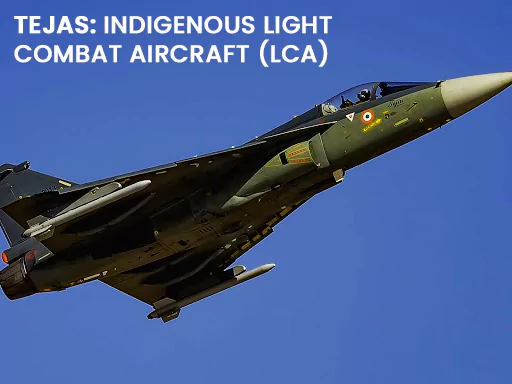
News Source: Indian Express
| Must Read | |
| NCERT Notes For UPSC | UPSC Daily Current Affairs |
| UPSC Blogs | UPSC Daily Editorials |
| Daily Current Affairs Quiz | Daily Main Answer Writing |
| UPSC Mains Previous Year Papers | UPSC Test Series 2024 |
According to a study conducted by the People’s Association in Grassroots Action and Movements, and the Indian Federation of App-based Transport Workers, Gig workers suffer from lack of social security, regulations.
Gig Economy Regulatory Framework and Initiatives
|
|---|
News Source: The Hindu
| Must Read | |
| NCERT Notes For UPSC | UPSC Daily Current Affairs |
| UPSC Blogs | UPSC Daily Editorials |
| Daily Current Affairs Quiz | Daily Main Answer Writing |
| UPSC Mains Previous Year Papers | UPSC Test Series 2024 |
INS Tir, the lead ship of First Training Squadron (1TS) participated in Exercise Cutlass Express – 24 (CE – 24) held at Port Victoria, Seychelles.
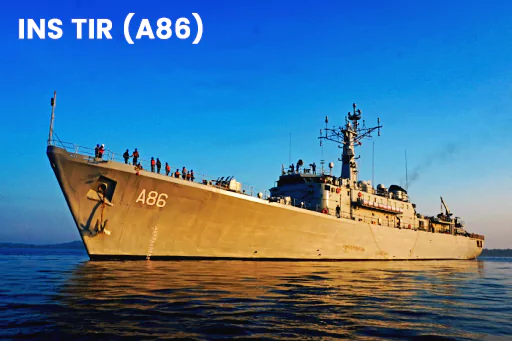
It underscores close ties between Indian Navy and the regional Navies towards joint training fostering interoperability and building bridges of friendship.
News Source: PIB
| Must Read | |
| NCERT Notes For UPSC | UPSC Daily Current Affairs |
| UPSC Blogs | UPSC Daily Editorials |
| Daily Current Affairs Quiz | Daily Main Answer Writing |
| UPSC Mains Previous Year Papers | UPSC Test Series 2024 |
This Article is based on the news “Bengaluru water crisis: Is the southern metropolis heading towards Day Zero?” which was published in the DownToEarth. Bengaluru is facing a severe water crisis attributed to a prolonged drought.
| Relevancy for Prelims: Water Resources, Water Conservation, Pollution, and State Of Global Water Resources Report 2022.
Relevancy for Mains: Groundwater Crisis in Indian Cities: Current Status, Impact, Reasons and Way Forward. |
|---|
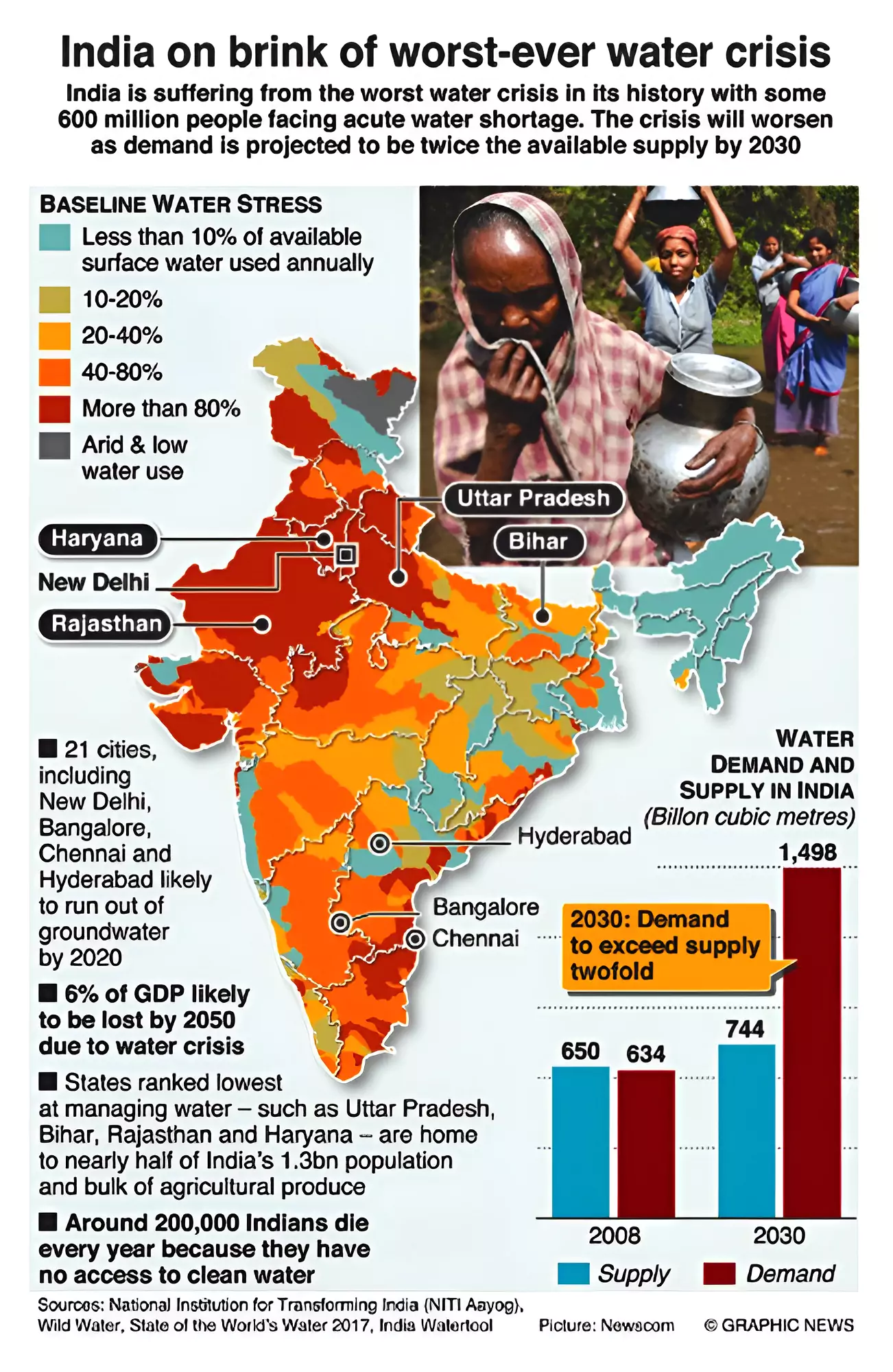 Risks for Day Zero: Around 30 localities under the Bruhat Bengaluru Mahanagara Palike (BBMP) are receiving water on a rotational basis every alternate day.
Risks for Day Zero: Around 30 localities under the Bruhat Bengaluru Mahanagara Palike (BBMP) are receiving water on a rotational basis every alternate day. | CWMI: The index evaluates states on nine broad sectors and 28 indicators, including groundwater, irrigation, farm practices and drinking water. |
|---|
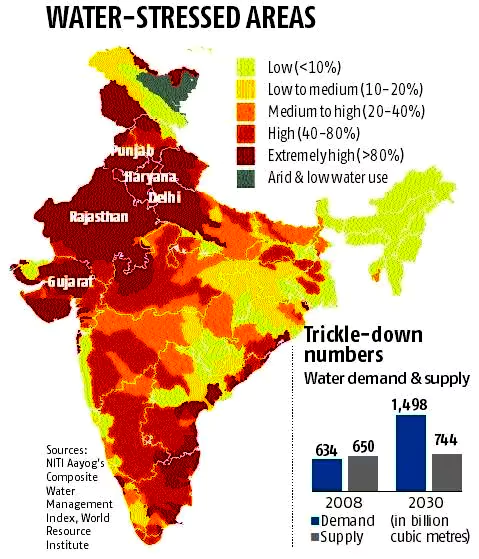
Government Initiatives to Preserve Groundwater
|
|---|
The Watershed Management Project of Gujarat:
|
|---|
| Prelims PYQ (2020):
Consider the following statements: 1. 36% of India’s districts are classified as “overexploited” or “critical” by the Central Ground Water Authority (CGWA). 2. CGWA was formed under the Environment (Protection) Act. 3. India has the largest area under groundwater irrigation in the world. Which of the statements given above is/are correct? (a) 1 only (b) 2 and 3 only (c) 2 only (d) 1 and 3 only Ans: (b) |
|---|
| Mains Question: “The ideal solution to depleting ground water resources in India is a water harvesting system. “How can it be made effective in urban areas? [250 Words, 15 Marks] |
|---|
| Must Read | |
| NCERT Notes For UPSC | UPSC Daily Current Affairs |
| UPSC Blogs | UPSC Daily Editorials |
| Daily Current Affairs Quiz | Daily Main Answer Writing |
| UPSC Mains Previous Year Papers | UPSC Test Series 2024 |
This Article is based on the news “India seals pact with 4-nation Europe trade group: $100 bn & 10 lakh jobs in 15-yr deal” which was published in the Indian Express. Recently, India and the four-nation European Free Trade Association (EFTA), an intergovernmental grouping of Iceland, Liechtenstein, Norway and Switzerland, signed a Trade and Economic Partnership Agreement (TEPA).
| Relevancy for Prelims: European Union (EU), Free Trade Agreements (FTAs), India-European Free Trade Association Agreement (India EFTA), ASEAN, and Indian Diplomacy.
Relevancy for Mains: Trade and Economic Partnership Agreement (TEPA) Between India & European Free Trade Association: Key Highlights, significance, Challenges, and Way Forward. |
|---|
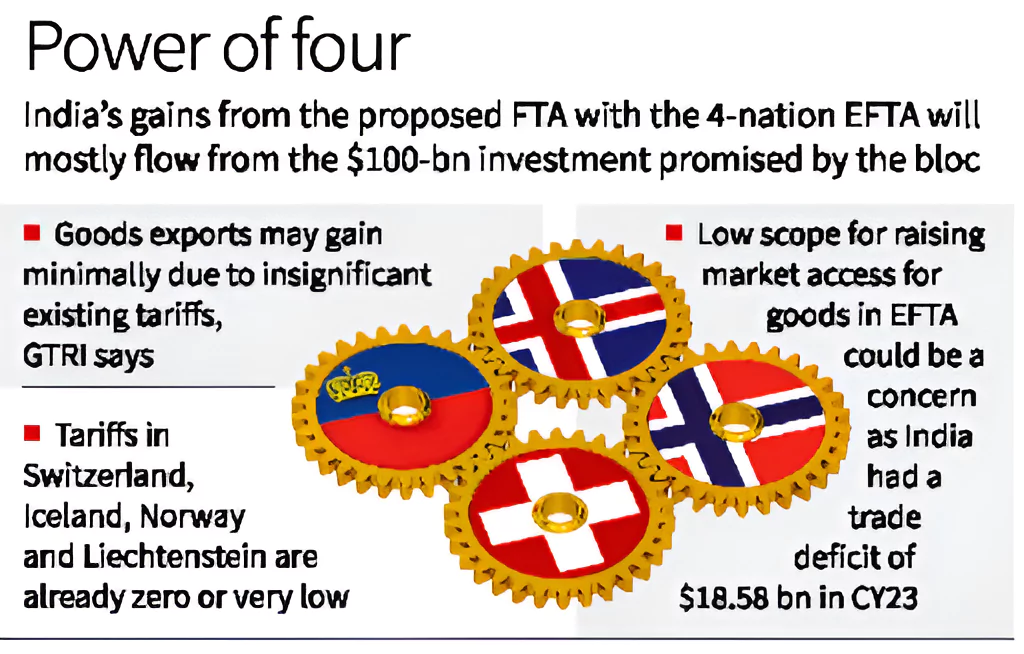
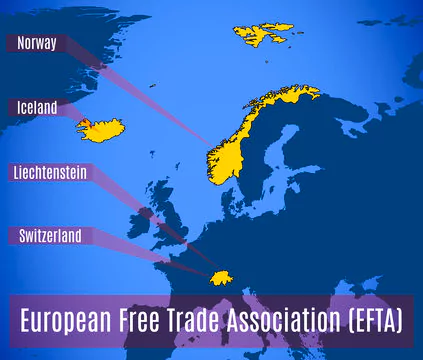
About the European Free Trade Association (EFTA)
|
|---|
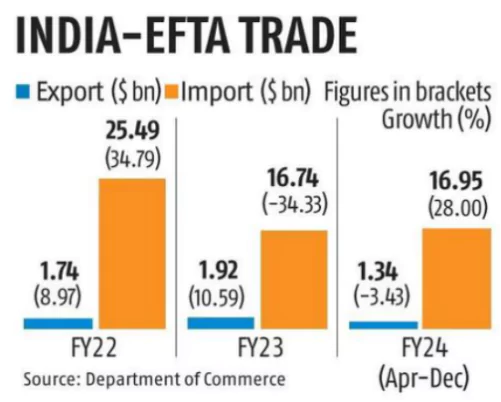 The Statistics:
The Statistics:
India EFTA Relations
|
|---|
Data Exclusivity:
|
|---|
| Prelims PYQ (2018):
Consider the following countries: 1. Australia 2. Canada 3. China 4. India 5. Japan 6. USA Which of the above are among the ‘free-trade partners’ of ASEAN? (a) 1, 2, 4 and 5 (b) 3, 4, 5 and 6 (c) 1, 3, 4 and 5 (d) 2, 3, 4 and 6 Ans: (c) |
|---|
| Mains Question: ‘Indian diaspora has a decisive role to play in the politics and economy of America and European Countries’. Comment with examples. |
|---|
| Must Read | |
| NCERT Notes For UPSC | UPSC Daily Current Affairs |
| UPSC Blogs | UPSC Daily Editorials |
| Daily Current Affairs Quiz | Daily Main Answer Writing |
| UPSC Mains Previous Year Papers | UPSC Test Series 2024 |
<div class="new-fform">
</div>
